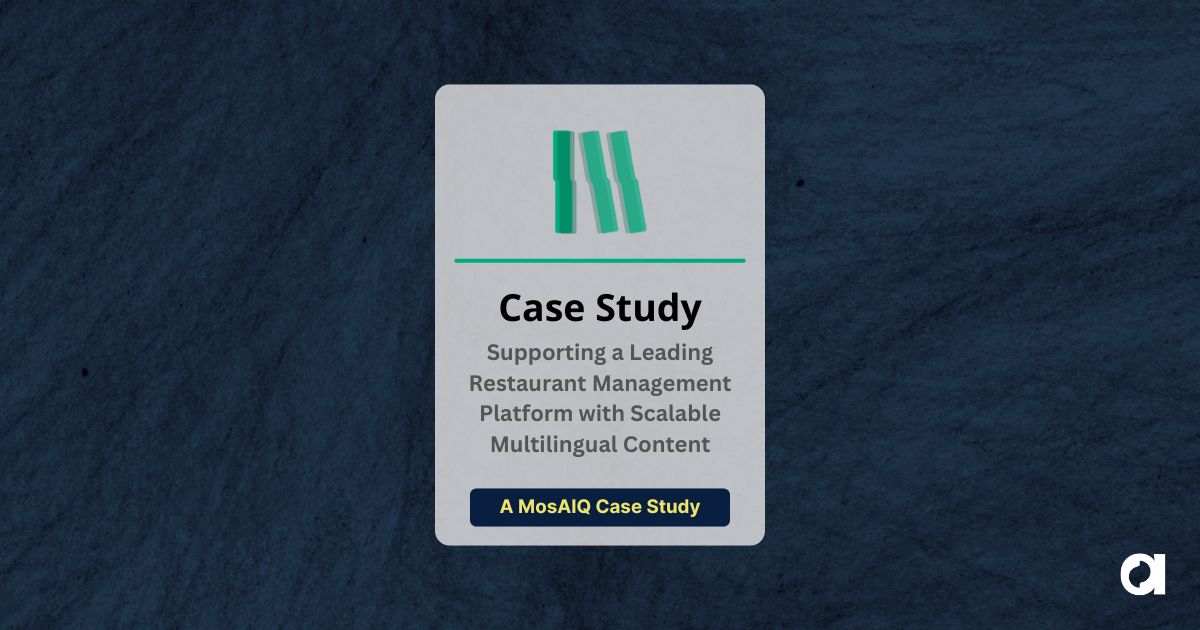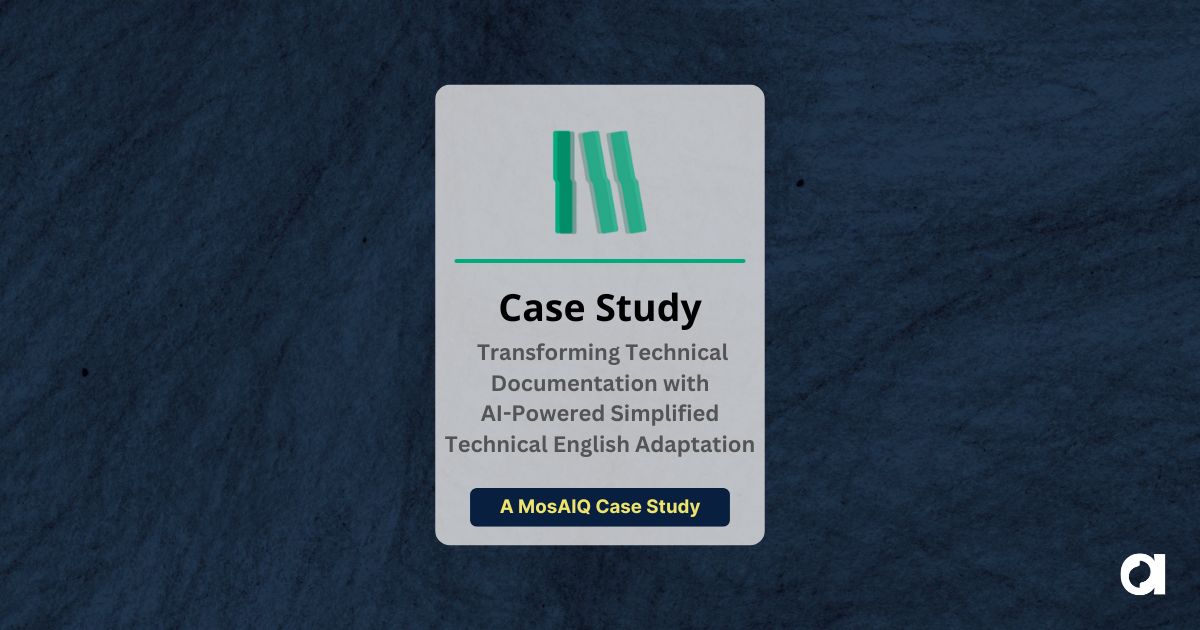From translating critical healthcare documents to enabling global product launches, AI-driven tools like machine translation (MT) have long been central to localization workflows. As these tools become more sophisticated, so too do the expectations for how they’re used and regulated.
The European Union Artificial Intelligence Act (EU AI Act) introduces a framework for regulating AI, and as MT and large language models (LLMs) become more embedded in localization workflows, understanding this regulatory landscape has become vital. With new compliance requirements, businesses using these tools will need to make sure they not only meet efficiency goals but also adhere to higher standards for accuracy and safety.
As mentioned in our previous blog, the EU AI Act’s framework sets the stage for AI regulation. Now let’s take a closer look at how the EU AI Act impacts AI-driven localization tools and what businesses need to do to stay ahead of the curve.
Risky Business: Classifying AI Tools by Risk
The EU AI Act classifies AI systems based on their potential to cause harm, with the goal of ensuring safety and accountability across various sectors. These classifications range from minimal risk to high risk, with a focus on balancing innovation with public safety.
For localization tools, particularly MT- and AI-assisted workflows, the classification matters significantly. High-risk applications, such as those used in healthcare or legal industries, face stricter regulatory scrutiny due to their potential impact.
When AI tools are used in contexts where precision is critical—like translating medical instructions or legal documents—failing to meet standards can have serious consequences. For example, translations of medical labels or patient-facing materials cannot afford to be confusing or incomplete, as the consequences could affect patient safety. Similarly, legal translations must maintain the integrity of highly technical language.
In contrast, tools that are low-risk—like basic content generation or internal communication translations—may face fewer regulatory hurdles, as the risks associated with errors are more contained. However, MT tools that are deeply integrated into certain risk-sensitive industries are in a different category entirely, and the EU AI Act holds these tools to higher standards.
Beyond the Backend: Transparency, Monitoring, and Data Quality
With the EU AI Act now in place, AI-driven tools like MT are required to meet stringent standards for clarity and responsibility—especially when handling sensitive content like medical or legal documents. Localization teams must now ensure their tools deliver efficient outputs while providing clear, understandable details about their operations.
Transparency is critical for maintaining trust. Under the EU AI Act, localization providers must explain how data is handled, ensure privacy safeguards, and disclose any potential biases. Ongoing monitoring and audit trails are equally vital. These systems track AI performance in real time, flag risks proactively, and maintain detailed records for compliance purposes, enabling teams to consistently meet evolving regulatory requirements.
Data quality in AI localization hinges on continuous refinement tailored to specific industry needs. Linguists and subject matter experts contribute critical feedback that helps identify gaps and improve dataset relevance. By regularly incorporating insights from these experts, localization teams can ensure that training data remains accurate, up-to-date, and aligned with compliance requirements.

Human Oversight and Ethical Design: Building Trust in AI Localization
The EU AI Act places a strong emphasis on the need for human oversight in high-risk AI systems, especially those used in high-compliance sectors. This is where the human-in-the-loop model comes into play. In sectors like healthcare and law, human involvement is required. Experts must review MT systems translating sensitive medical or legal documents to ensure accuracy and compliance.
Ethical AI design complements this oversight. AI systems must not only function effectively—they must also be credible, explainable, and respect privacy. Under the Act, businesses must ensure that their tools are developed responsibly, addressing issues like fairness and potential biases.
Finally, user feedback is crucial in both human oversight and ethical AI design. By incorporating feedback from linguists, internal teams, and end-users, language partners can improve accuracy and ensure their AI systems meet industry standards. Linguists and translators help identify errors in specialized terms, while internal teams and end-users provide insight on how well translations resonate with target audiences.
Where We Go From Here
Looking ahead, the EU AI Act signals a shift toward developing AI localization tools that meet regulatory standards while addressing practical challenges. Teams are leveraging AI tools that incorporate real-time feedback and adjust dynamically to changing requirements, allowing workflows to evolve alongside regulatory changes and market needs.
Localization teams are integrating AI solutions to efficiently handle expanding multilingual workflows while maintaining precision and compliance. AI technologies that dynamically update translation memories and adjust contextually for regional nuances help businesses scale their workflows effectively.
Businesses that embrace compliance-first tools are better positioned to navigate this evolving landscape. As the industry adapts to the EU AI Act, the key to success lies in leveraging technology that supports compliance without sacrificing innovation.
Tools for Today, Strategies for Tomorrow
The localization industry faces a critical moment to embrace technologies that align with the EU AI Act while meeting growing demands for multilingual content. By integrating adaptive AI tools and prioritizing compliance-first workflows, businesses can enhance their localization strategies, maintain trust, and drive sustainable growth in an increasingly globalized market.
Discover how tailored AI solutions can help you navigate the challenges of compliance and scale your localization strategy. Contact us today to learn more about AI-driven solutions.
 Argos Multilingual
3 min. read
Argos Multilingual
3 min. read
BOSTON (MA), February 11, 2025 Phrase, a world leader in AI-led translation technology, and Argos Multilingual, a leading provider of language services, today announced the introduction of a new shared Solutions Architect role. This initiative exemplifies both companies’ shared commitment to close collaboration and a customer-centric approach, with a shared goal of advancing localization practices and […]

 Argos Multilingual
3 min. read
Argos Multilingual
3 min. read
San Francisco (CA), February 4, 2025 Argos Multilingual, a leader in enterprise localization solutions, today announced the general availability of Argos MosAIQ, its advanced AI-powered translation platform. Following extensive testing and validation with select enterprise clients, the platform has demonstrated significant improvements in translation efficiency while maintaining the highest quality standards. “Mosaiq represents a fundamental […]











